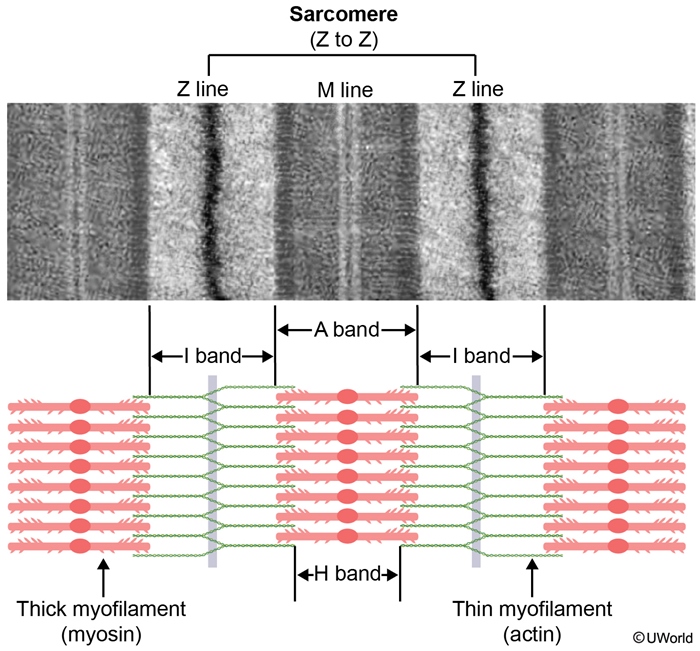Muscle Physiology
Article Sections
Introduction
Skeletal muscle function depends on the coordinated interaction of electrical, chemical, and mechanical processes. At the core of this physiology is the excitation-contraction coupling mechanism, through which an action potential triggers calcium release and ultimately leads to muscle contraction. Neuromuscular transmission, sarcolemmal excitability, and intracellular calcium dynamics are tightly integrated to ensure precise regulation of force generation. Cardiac and smooth muscle, which contract involuntarily (unlike skeletal muscle), share some similarities with skeletal muscle but exhibit differences in structure and regulation.
Skeletal muscle structure
Skeletal muscle is composed of long, cylindrical multinucleated cells called muscle fibers, which are formed by the fusion of myoblasts during development. Each muscle fiber is surrounded by a plasma membrane known as the sarcolemma and contains numerous myofibrils, which are the contractile elements of the cell. Myofibrils are organized into repeating structural units called
Continue Learning with UWorld
Get the full Muscle Physiology article plus rich visuals, real-world cases, and in-depth insights from medical experts, all available through the UWorld Medical Library.
Figures
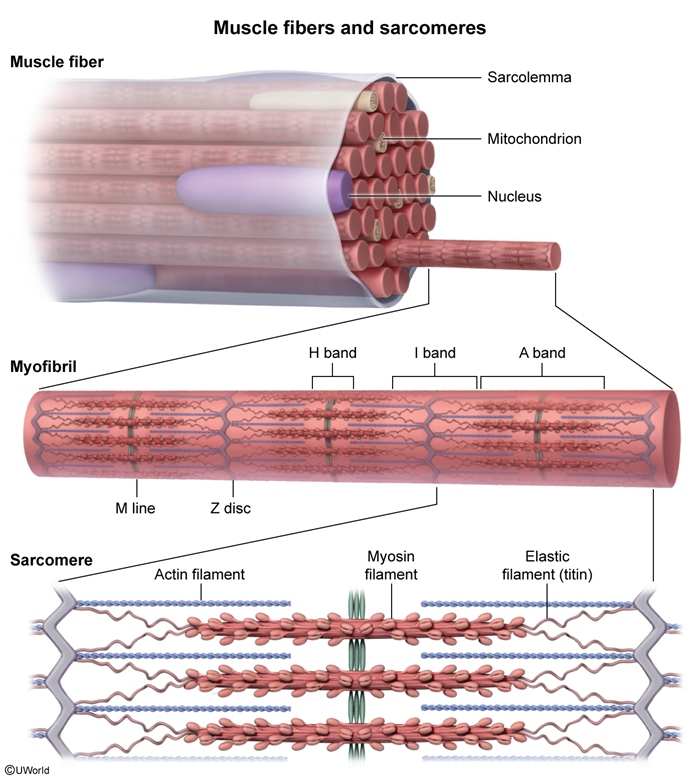
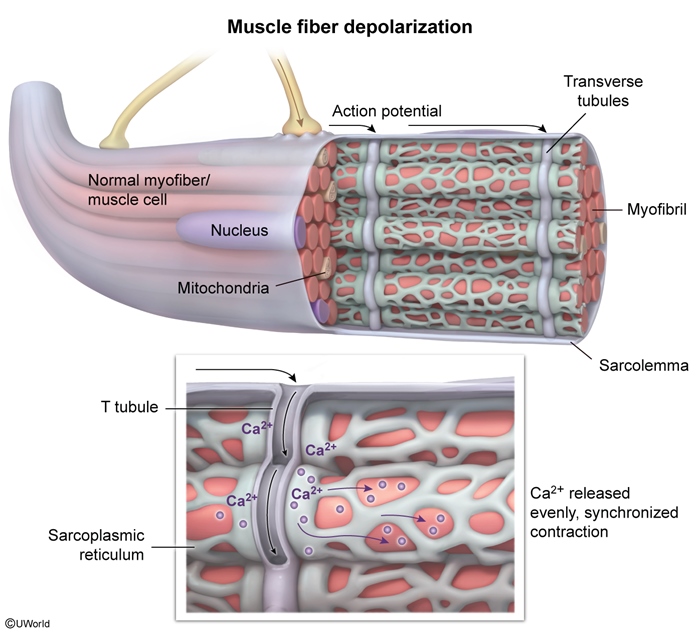
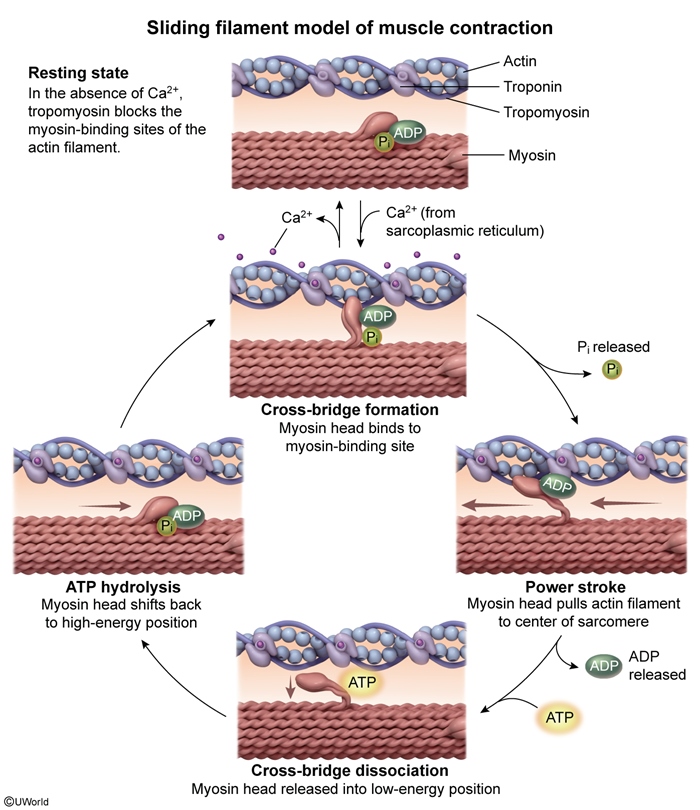
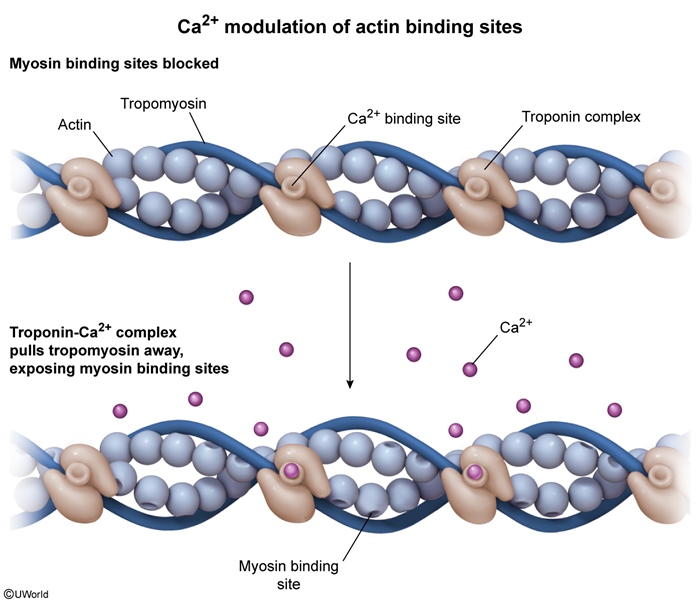
Images
